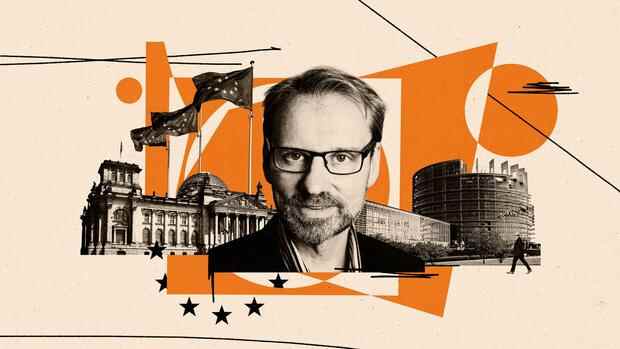Wolfgang Münchau is director of eurointelligence.com.
(Photo: Klawe Rzeczy)
Every form of analysis is subject to cognitive distortions, i.e. systematically flawed tendencies in perceiving, remembering, thinking and judging. The most successful analysts are those who are aware of them.
Last week I wrote about a special form of distortion called model distortion. Once you have a mathematical model, for example for the spread of a pandemic, you can be tempted to take the model more seriously than the reality it is trying to explain.
There are many cognitive biases. With political analysts, one should be wary of the hindsight bias – or the “I-knew-it-all-time” bias. The human mind is not well prepared to deal with uncertainty that is not subject to a known probability distribution.
When people give you percentage probabilities of future political events, I advise you to stay away from them. The victory of the Social Democrats in the Bundestag election in September was unpredictable as early as March or April.
Top jobs of the day
Find the best jobs now and
be notified by email.
Olaf Scholz insisted that the German public, as soon as they got to know all the candidates, would vote for him, the experienced finance minister. The bet worked. But at the time there was no way of knowing that Annalena Baerbock, the co-chair of the Greens, would come under fire for a plagiarism affair.
And you could not have known that Armin Laschet, the CDU chairman, would giggle at a meeting after the flood disaster in the summer. That Scholz’s bet worked out doesn’t mean that it inevitably had to work out.
Voters change their minds
Had it not risen, the retrospective analyst would have told us that it could not possibly have risen. The best way to see the future is through the scenarios and events that might trigger it. But you cannot convert these into probabilities.
So what do we know? Before the general election, we observed a long-lasting trend towards a declining share of the vote in the SPD. In the run-up to the election, the SPD was now only 14 percent. Scholz gained about ten percentage points in the course of the election campaign. Gerhard Schröder did the same in the election campaigns in 2002 and 2005, once the SPD won the election and then lost.
25.7 percent of voters voted for the SPD in the federal election in September.
(Photo: dpa)
Then as now, there is an inconsistent section of the German electorate that changes its mind during the election campaign. They tend to change their preferences as a group. This group favored Baerbock in April, Laschet in June, and switched to Scholz in August. That support still continues. But she could switch to CSU boss Markus Söder in 2025. Or maybe not.
We also know that the only unbroken trend in European politics is fragmentation. The most successful political parties today reach 20 to 25 percent and not 40 to 45 percent as in the past.
Six parties are represented in the German parliament today. For the first time there will be a three-party coalition in Germany. In the Netherlands, the trend towards fragmentation is even more advanced.
Elections are zero-sum games
17 political parties are represented in the Dutch parliament. It takes four parties to form a coalition. It is true that an overwhelming percentage of Germans want Scholz to be Chancellor. But just under 26 percent voted for the SPD.
Less than one percent would have turned the choice the other way. Elections are zero-sum games. Close victories, such as that of Donald Trump in 2016, the Brexit referendum or the triumph of Scholz, are important. But they are almost never the beginning of a trend.
What does this mean for political observers? Most will do what they have done before – project surveys and tell stories. The smart analysts take a step back.
Wolfgang Münchau is the director of www.eurointelligence.com
More: Growth forecast capped – financing of traffic light projects questionable
